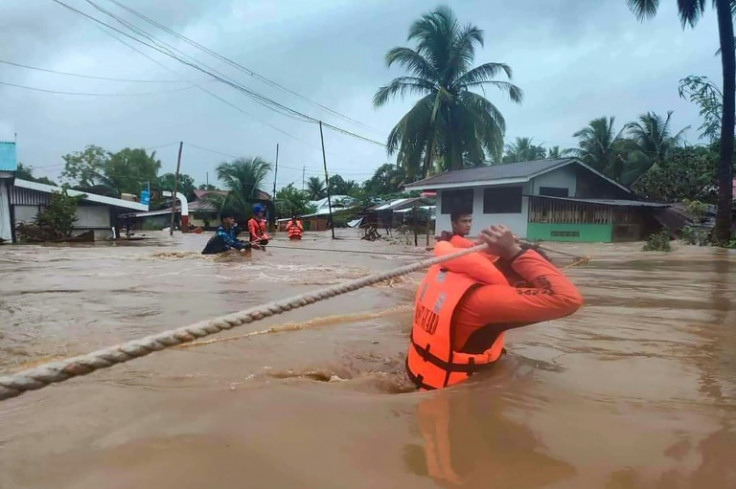Tropical Storm Slams Into Philippines, At Least 45 Dead

Severe Tropical Storm Nalgae slammed into the Philippines on Saturday, after unleashing flash floods and landslides that left at least 45 people dead according to a sharply revised official tally.
Nalgae pounded the archipelago nation's main island of Luzon with maximum winds of 95 kilometres (59 miles) an hour after making landfall on the sparsely populated Catanduanes island before dawn.
The destruction began well ahead of landfall, with heavy rain inundating mostly rural areas on Mindanao island in the south on Thursday followed by deadly landslides and flooding on Friday.
But the government revised its official death toll downward from 72 to 45 in the afternoon.
Officials said some deaths had been erroneously tallied twice from the Mindanao events, which accounted for 40 deaths. The storm also killed five others elsewhere in the country.
In recent years, flash floods with mud and debris from largely deforested mountainsides have been among the deadliest hazards posed by typhoons in the Philippines.
Rescue workers are focusing on the village of Kusiong, home to between 80 and 100 people, which was buried after part of a denuded mountain nearby collapsed.
"Yesterday we were focused on rescue and recovered 11 bodies," regional civil defence chief Naguib Sinarimbo told AFP.
"Today we resumed our work, but this is already a retrieval operation because the village has been buried under rock and mud for more than a day," he added, declining to say how many are feared dead.
The storm also caused flooding elsewhere in the country.
Photos released by the coastguard showed rescuers using an old refrigerator as an improvised boat to pull children from a flooded community on the central island of Leyte.
The state weather service said the eye of Nalgae passed the small island of Marinduque in mid-morning and could hit Manila, a sprawling metropolis of more than 13 million people, later Saturday.
"Widespread flooding and rain-induced landslides are expected," while there was "minimal to moderate risk of storm surge" or huge waves hitting coastal areas, it added.
"Based on our projections, this one is really strong, so we really prepared for it," national civil defence director Rafaelito Alejandro said, adding that 5,000 rescue teams were on standby.
He urged residents in the storm's path to stay at home before the storm exits into the South China Sea early Sunday.
"If it's not necessary or important, we should avoid going out today because it is dangerous and could bring you harm," Alejandro said.
More than 7,000 people were evacuated ahead of the storm's landfall, the civil defence office said.
The coast guard has also suspended ferry services through most of the archipelago nation due to rough seas, stranding hundreds of vessels and thousands of passengers at ports.
The civil aviation office, meanwhile, said it has shelved more than 100 flights so far.
The storm struck at the beginning of a long weekend in the Philippines, when millions return to their hometowns to visit the graves of their dead relatives.
The Philippines is hit by an average of 20 major storms each year that kill hundreds of people and keep vast regions in perpetual poverty.
Scientists have warned that such storms, which also kill livestock and destroy key infrastructure, are becoming more powerful as the world gets warmer because of climate change.
© Copyright AFP 2024. All rights reserved.





















